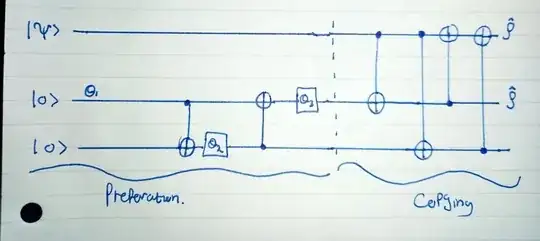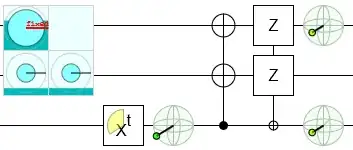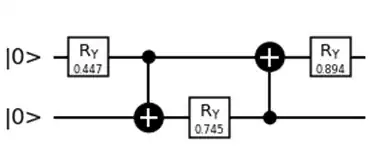Above is a circuit for "Approximate Quantum Cloning" The preparation state is given by $$|\psi\rangle =\alpha|0\rangle+\beta|1\rangle$$ The gates labelled $\theta_i$ denote single qubit rotations given by $$R_y(-2\theta_i)=\begin{bmatrix}\cos\theta_i&\sin\theta_i\\-\sin\theta_i&\cos\theta_i\end{bmatrix} $$ i.e Counterclockwise rotations of angle $-2\theta_i$ about the y-axis on Bloch Sphere.
Each gate rotation is given by:
$\cos2\theta_1 =\frac{1}{\sqrt5}$
$\cos2\theta_2 =\frac{\sqrt5}{3}$
$\cos2\theta_3 =\frac{2}{\sqrt5}$
Question: Show at the end of the preparation stage the two qubits initially in the state $|00\rangle$ are transformed into the state $$|\phi\rangle =\frac{1}{\sqrt6}(2|00\rangle+|01\rangle+|11\rangle) $$
I'm quite unsure of how to approach this, as it is my first time dealing with a circuit like this. Are the two $|0\rangle$ states said to be entangled, hence the double $|00\rangle$ notation, I thought of applying the rotations to each qubit individually, along with a $\hat C_x $gate operation?




